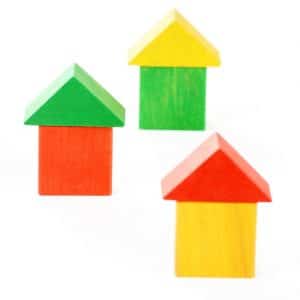What you need to know about rentvesting
The “A-word” is in the headlines a lot lately isn’t it?
When we say that, of course, we mean affordability.
Would-be homeowners in Sydney and Melbourne are finding it increasingly difficult to get a foothold in the market.
 The great thing is that plenty of potential property owners aren’t giving up.
The great thing is that plenty of potential property owners aren’t giving up.
No, instead they’re adopting some lateral thinking to solve a problem that really isn’t that new.
For an increasing number of people, buying the family home (and achieving the Great Australian Dream) in a suburb they actually want to live in is becoming more difficult.
So what generally happens?
People take a big breath, adjust their expectations and are forced to buy a property in the outer suburbs – but at least they have a home, right?
But then reality sets in when the usual 60-minute drive to work (which used to be a 15-minute tram or train ride when you rented closer to the city in a funky suburb) turns into a 90-minute drive because of increased congestion on the roads.
The same occurs on the way home, so you’re not walking through the front door until 8pm when the dinner is cold and the kids or pets are already asleep.
Some people call this “reality”. Some call it the “rat race”. But is there another way?
The rise and rise of rentvesting

Rentvesting is an alternative property strategy, where you rent where you want to live and then purchase an affordable asset somewhere else.
That property hopefully grows in value because it’s in a smart location where the rental income contributes largely, if not fully, to the mortgage repayment.
Smart investors may even take out a principal and interest loan against their investment property and treat this as a “home loan” so they’re paying down the loan in addition to receiving the capital growth and tax benefits of owning an investment property.
So when we say “rentvesting”, we mean you’re renting in a suburb that you want to live in, have the lifestyle you want and, most importantly, you haven’t lost about two hours commuting to an outer-ring suburb because that was all you could afford.
But what happens next? Will you ever own your family home or will you rent forever?
Do you need a “home” at all?
Some people want a property to call their home, raise a family there, and never move – which is perfectly understandable.
But what if you never owned a home?
Instead, you rented a quality property and still established stability for your family by signing a five or even 10-year lease?
By not owning a home you never have to spend a cent on the property you live in – that is the responsibility of the landlord.
You never have to worry about the garden, you never have to renovate and, for us, this means that you’ll never have to spend Saturday mornings in Bunnings or IKEA!
On the other hand, if any of your investment properties need maintenance, your property manager takes care of it and you do not have to lift a finger.
Again, we are saving time that we can instead spend with our family and friends.
But what happens when you retire in 30 years’ time and you have rented for most of your working life?
The retirement reality for rentvestors
 Well, maybe you have managed to purchase a family home in that time in a suburb you want to live in.
Well, maybe you have managed to purchase a family home in that time in a suburb you want to live in.
But if you have never managed to buy your family home and instead have, for example, bought five quality investment properties, where does that leave you?
In theory, you could have investment properties that can provide you and your family with income streams in your retirement in addition to your superannuation and other investments.
One of the income streams could pay your rent, so effectively you live rent-free for the rest of your days.
Your children could live in one or two of the properties and also pay you rent until they inherit the properties, which they can then continue to live in or rent out.
Any other rental income is just the cream on top.
Or perhaps you sell down some of your portfolios to buy a property outright in the suburb where you’ve always dreamed of retiring.
Now compare this to the alternative – you could have purchased a home in an outer suburb and spent your working life travelling two hours to work each day.
There may have been minimal capital growth on this outer-ring home, you may have only been able to purchase one investment property as an additional income stream, and you have received minimal tax benefits compared to owning a number of investment properties.
 At the end of the day, though, it is all about choice.
At the end of the day, though, it is all about choice.
Some will do anything to achieve the “Australian dream” of owning a home but we need to remember that it is just a property.
One day you will move out and someone else will move in.
But if you can move past the mainstream view of home ownership and see the financial and lifestyle benefits of rentvesting, it could lead to greater happiness and financial freedom much sooner rather than much later – or even not at all.
The information provided in this article is general in nature and does not constitute personal financial advice. The information has been prepared without taking into account your personal objectives, financial situation or needs. Before acting on any information you should consider the appropriateness of the information with regard to your objectives, financial situation and needs.
- Why every First Homebuyer needs a Mortgage Broker - October 7, 2024
- As Migration Returns, What Does it Mean for Housing Markets? - April 26, 2024
- How to prepare to buy your first home in 2023 - December 2, 2022

